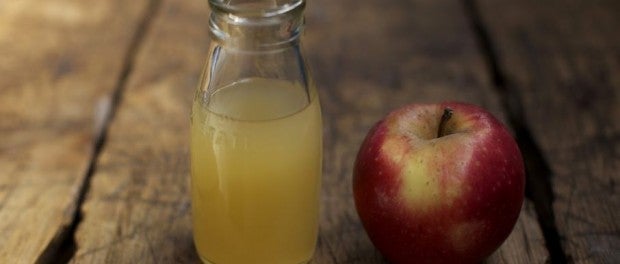Making Your Own Apple Cider Vinegar for Use Around the Farm

A very handy fluid to have on hand at all times is apple cider vinegar. It is useful for many purposes around the farm, such as pest control (both to stop bites and treat those have already happened), combatting illness by alkalizing the body, adjusting stomach pH to optimize digestion, treating skin conditions from fleas to mastitis, as well as general cleaning around the farm, in the chicken coop, and in your home as well. Although it is widely available at many stores these days, it is very much possible to cut out the middle man and make your own. Rather than be dependent upon your local grocer or big box store, you can instead rely on yourself and cut out any lingering preservatives at the same time, which makes making your own vinegar a win-win.
In order to get started making your own apple cider vinegar, also known as ACV, you are first going to need some apples. Organic apples are the way to go since the ultimate goal is apple cider vinegar that is organic, raw, and unfiltered, but in a pinch you can compromise on this in the case of vinegar for cleaning as opposed to vinegar you intend to consume. However, if you want to duplicate the coveted apple cider vinegar with the mother, it is organic or bust. Clean your apples thoroughly and begin the process of cutting them up. However, if you have recently made an apple pie, for example, you can use your scraps instead of whole apples. Either way, you want to let your apples or apple scraps brown via exposure to air.
Next you want to place your apple components into glass jars. Dark colored jars are preferable for this purpose, but regardless of the jars used, once full they will need to be located in a cool, dark place. Upon filling your jars with apples and water, cover them with a piece of cheese cloth and secure it in place with a string or rubber band. If you are using whole apples, this liquid will need to sit and ferment for approximately six months to achieve peak effectiveness. When using scraps, your apple cider vinegar will be ready much sooner, typically after about one month of fermentation. When the allotted time is up, remove any gunk from the top and strain the contents to separate apple remnants from apple cider vinegar. After straining, relocate your vinegar into the bottle of your choice for use and/or storage.
Since the process of going from apples to apple cider vinegar is time consuming, you are going to still be dependent on store bought in the meantime. As you buy and use that apple cider vinegar, however, don’t discard the glass jars. These are perfect to reuse to store your newly made vinegar, plus it saves you the trouble of labelling with anything more than perhaps a date made. Simply use a funnel for pouring so there is no waste and your new vinegar bottles will be ready to go.
Making your own apple cider vinegar is just one more way to cut expenses on the farm. If you happen to have apple trees and find apples falling to the ground that are not quite fit for eating, they can still be put into making vinegar, saving them from becoming waste. In the end, apple cider vinegar is extremely handy to have and very easy to make, requiring little effort and attention, plus it gives you a big and very useful reward in the end.






 Your Privacy Choices
Your Privacy Choices
Leave a comment